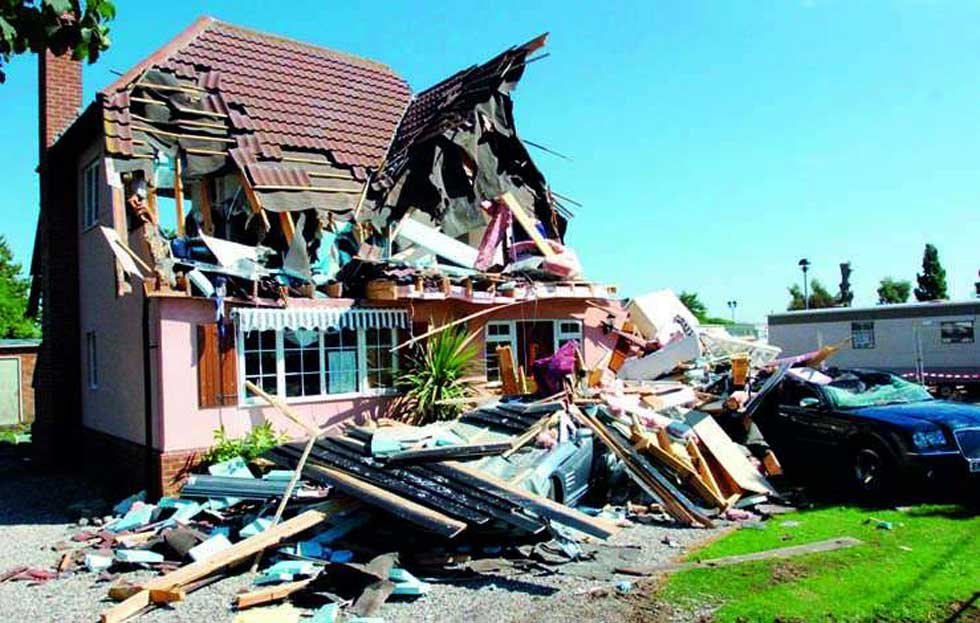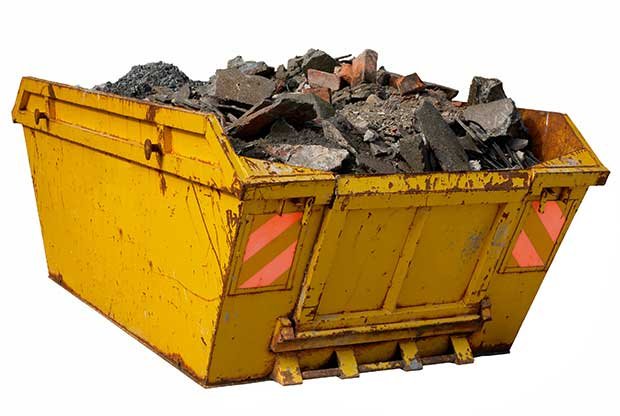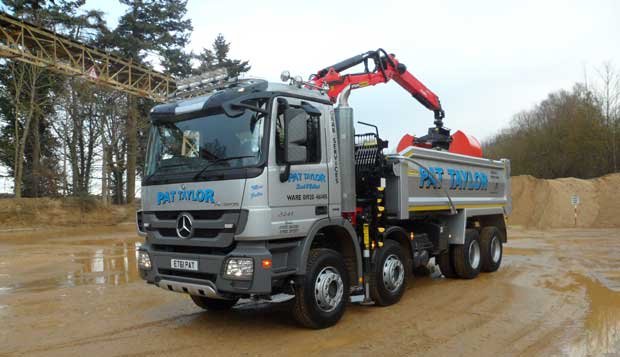Building projects equal mess — usually in large quantities. But what is the best way to dispose of it all and how much will it cost you?

Thirteen percent of construction products are sent to landfill without ever being used on site. There are several options when it comes to disposing of building waste:
The choice you make should be based on what this mess is comprised of – from piles of bricks and tiles, to timber, old bathroom suites and mounds of old insulation – your budget, access to the site and the total amount of waste you need to get rid of.
Recycling Site Waste
The cultural shift in recent years towards sustainability has placed greater scrutiny on the way we dispose of our surplus building materials. The key is to think carefully, and to be realistic, about what you can reuse either in your own house or, more likely, to give or sell to others.
• General rubble can be compacted on site and reused as hardcore for landscaping purposes.
• Whole bricks and blocks can be utilised elsewhere — even if you don’t particularly like them, they’re worth saving for the likes of minor landscaping projects.
Depending on the scale of the project, you could employ a specialist contractor to manage the recycling of your general waste. They will sort through your waste and separate it – much like the household recycling collection – into reusable items.
Rules on disposing of waste at local authority sites are fairly strict — you’re allowed to dispose of waste from building work carried out on your property as long as you’re the person who carried out the work. So if you’re employing builders, you’ll need to treat your waste as commercial waste. Bear in mind that local authorities are charged a landfill tax (currently $150/tonne) and are therefore incentivised to get you to recycle as much of your waste as possible.
Construction Marketplaces
Salvage yards and the likes of eBay are all great resources both for those trying to get rid of materials and those looking to buy them. One company has clocked their success and created a dedicated construction marketplace which allows users to search for free or reduced-price building materials in their area.
Asbestos
If you have found asbestos in your project, it will need to be taken to a licensed asbestos disposal site. Although you can remove it yourself, you should take advice from your local authority first or get in touch; the latter has details of companies who can carry out the removal for you.
You will then need to have it collected, either by a private company or in some cases by the local authority. Some authorities will remove a small amount for free, while others charge — this varies, but around or upwards of $70/200kg could be expected.
Skips
Skips are perhaps the most obvious way of getting rid of building detritus. They come in many different sizes, get dropped off and picked up for you, and can be packed to fit in a good amount of site waste.
 The size of skip you’ll need will mainly depend on how much rubbish you have, but you will also need to take into account where the skip is going to be located while you fill it and whether you have space for an enormous model. However, where possible, be generous with your space allowance. This is an indication of standard sizes, but most suppliers offer larger sizes if required:
The size of skip you’ll need will mainly depend on how much rubbish you have, but you will also need to take into account where the skip is going to be located while you fill it and whether you have space for an enormous model. However, where possible, be generous with your space allowance. This is an indication of standard sizes, but most suppliers offer larger sizes if required:- 1-2 cubic yards: These measure 0.76m (h) x 1.52m (l) x 1.22m (w) and can take the equivalent of around 25 to 35 black rubbish bags. From $100.
- 3-4 cubic yards: Measuring 0.97m (h) x 1.83m (l) x 1.29m (w), they take around 40 black bin bags. From $150.
- 6-8 cubic yards: These measure 1.22m (h) x 3.66m (l) x 1.68m (w). They take the equivalent of around 70 to 80 black bin bags. From around $180.
So, just where will your skip go?
This is important to establish as you might find you have to apply to your local authority for a permit first for those skips placed on the road. Some authorities ask that the skip hire company applies — which is obviously less hassle for you.
If you have a driveway that can accommodate a skip then great, but do not assume you own the grass verge in front of your house if you plan on locating the skip there — check first. If you have no room at all for a skip, some companies will wait while you load.
Before you go ahead and order a skip, be aware that there are some things you can’t put in a skip, including:
- Asbestos
- Tyres
- Refrigerators and freezers
- Liquids such as paints, oils or solvents
- Televisions
- Light bulbs
Finally, make sure the company you hire is registered as Environment Agency approved and aim to get at least three estimates in order to get the best deal.
Skip Bags
Skip bags are a great solution for smaller-scale projects, or for when you first take on a renovation or move into an old property and want to get old carpet or furniture out. They cut out the need for trips to the local tip and are easier to find a place for than a skip. They can be bought at many DIY warehouses or online and can then be collected when you have finished filling them.
On the downside, skip bags take less waste than either a skip or a grab lorry — with the biggest at around 4.5 cubic yards, taking approximately 1.5 tonnes.
Grab Lorries
Those undertaking very large-scale building works – digging foundations or demolishing sections of a building, for example – might consider hiring a grab lorry as an alternative to a skip. To get an idea of how much waste they can carry, they tend to come in three sizes: four-wheel, six-wheel and eight-wheel.
A four-wheel lorry can usually carry one skip load (around 9 tonnes), while an eight-wheel can take around three skip loads (or 18 tonnes). Considering that prices start from around $300 for an eight-wheel grab lorry (plus VAT), they are a much more cost-effective way of getting rid of larger loads than a skip.
 They also take much of the hard work out of rubbish removal, meaning that rather than having to load up a skip, a grab lorry’s hydraulically operated extending loading crane can do it for you, scooping it up and depositing it straight into the lorry.
They also take much of the hard work out of rubbish removal, meaning that rather than having to load up a skip, a grab lorry’s hydraulically operated extending loading crane can do it for you, scooping it up and depositing it straight into the lorry.
They are a handy option for those struggling to know where to locate a skip, although obviously you will still need to find a place to dump all the waste that you plan to have ‘grabbed’ — which can mean a great big unsightly pile of rubble on your previously pristine driveway or lawn. Many grab lorries have a good reach (of around 8m) from the side of the lorry, so are able to collect waste from over hedges and fences, and around obstacles such as lampposts, etc.

Comments
Post a Comment